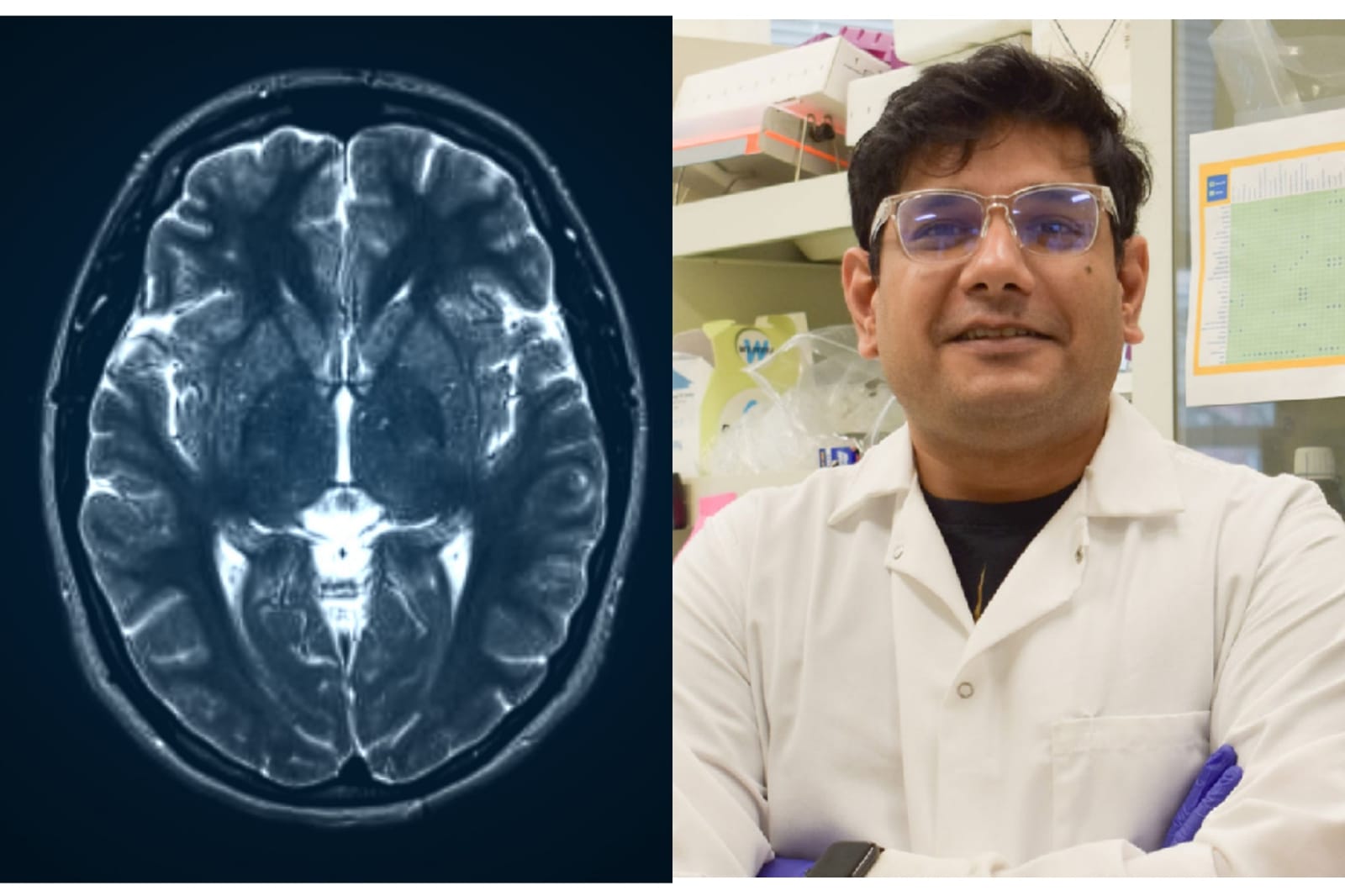Indian American professor innovates cancer surgery with afterglow imaging
The research, published in ‘Advanced Functional Materials’ advances afterglow imaging toward greater clinical adaptability.
 Indrajit Srivastava researches on 'afterglow' brain imagining / Image - Texas Tech University (R); Brainline.org (L)
Indrajit Srivastava researches on 'afterglow' brain imagining / Image - Texas Tech University (R); Brainline.org (L)
An Indian American professor of engineering at Texas Tech University is pioneering a new approach to improve cancer surgery by developing an advanced imaging technique known as afterglow imaging.
Indrajit Srivastava who joined Texas Tech in fall 2023, has focused his research, published recently in ‘Advanced Functional Materials’, on enhancing the accuracy of tumor removal during surgery and making afterglow imaging more clinically adaptable.
The current standard, fluorescence-guided surgery, involves injecting a dye that makes tumors glow when illuminated by a laser, helping surgeons distinguish between cancerous and healthy tissue. However, the technique has limitations, including the immediate disappearance of fluorescence when the laser is turned off, as well as limited tissue penetration and signal scattering.
Addressing these challenges, Srivastava has turned to afterglow imaging, a method that allows light to persist in tumors for up to 10 minutes after the initial laser illumination. This enables surgeons to operate with greater precision, even in deep tissues where traditional fluorescence fails.
According to Srivastava, this technique is similar to glow-in-the-dark stickers, providing a recurring light source that helps ensure all cancerous tissue is removed during surgery.
To further improve afterglow imaging, Srivastava and his team have been working on enhancing the technique by combining afterglow materials with proteins, which increases the penetration depth to one centimeter.
Srivastava plans to pursue federal funding to advance this research, with support from Texas Tech’s One Health initiative. He hopes to present his findings at national conferences and continue refining the technology to improve surgical outcomes for cancer patients.
“You have to always keep challenging the current technologies because nothing is foolproof. There’s always room for improvement, and I think that’s what we need to do as scientists,” Srivastava said.
He received his B.E. in metallurgical engineering and materials science in 2015 from the Indian Institute of Engineering Science and Technology, Shibpur, India, and further received his M.S. and Ph.D. degrees from University of Illinois Urbana-Champaign (UIUC) in 2017 and 2020, respectively.


 Bhavana P
Bhavana P


.jpg)
.jpg)
.png)
.png)

.png)

.png)
.jpg)

Comments
Start the conversation
Become a member of New India Abroad to start commenting.
Sign Up Now
Already have an account? Login